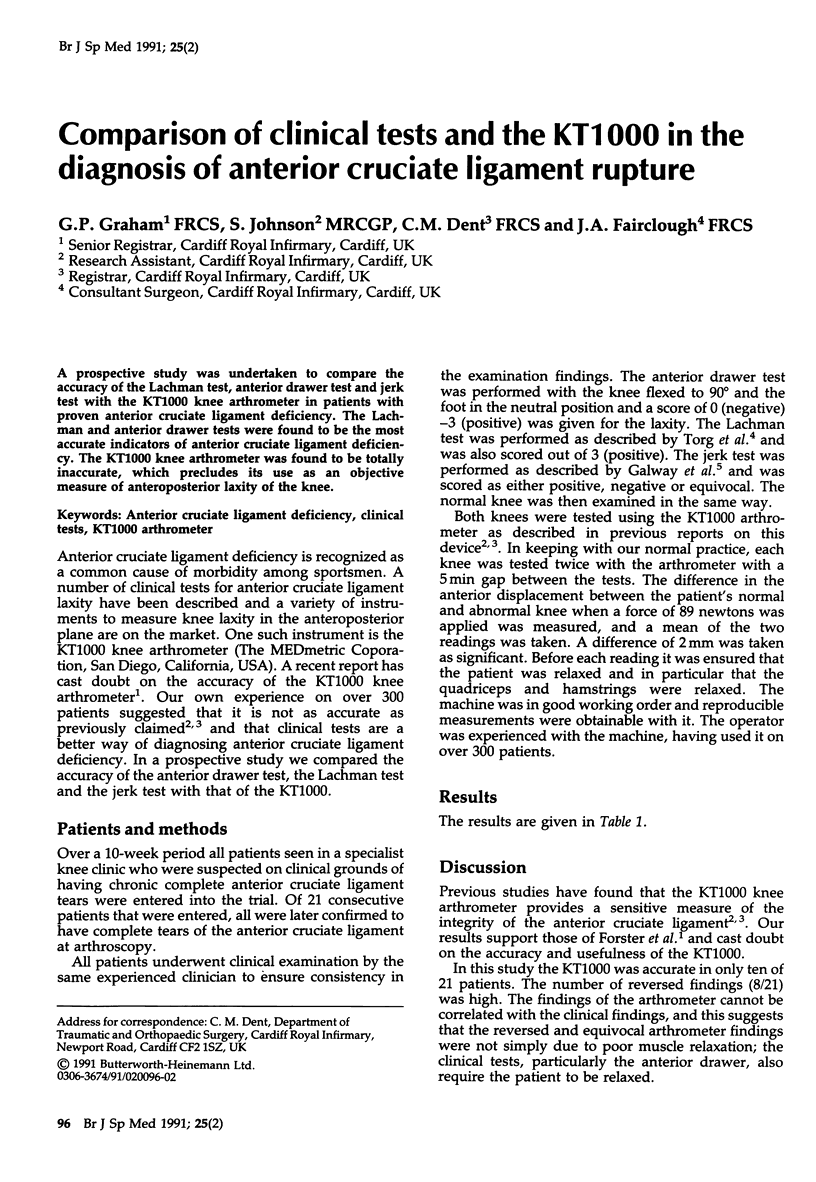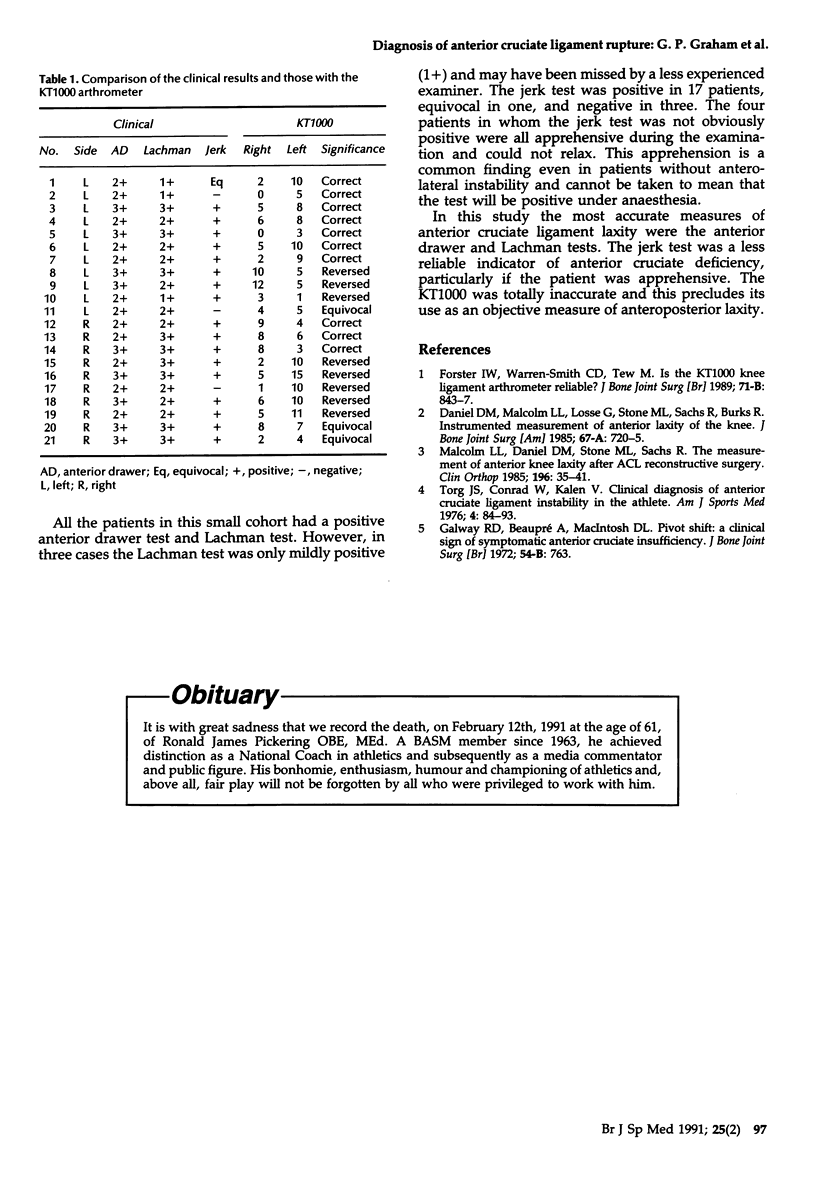Abstract
A prospective study was undertaken to compare the accuracy of the Lachman test, anterior drawer test and jerk test with the KT1000 knee arthrometer in patients with proven anterior cruciate ligament deficiency. The Lachman and anterior drawer tests were found to be the most accurate indicators of anterior cruciate ligament deficiency. The KT1000 knee arthrometer was found to be totally inaccurate, which precludes its use as an objective measure of anteroposterior laxity of the knee.
Full text
PDF

Selected References
These references are in PubMed. This may not be the complete list of references from this article.
- Daniel D. M., Malcom L. L., Losse G., Stone M. L., Sachs R., Burks R. Instrumented measurement of anterior laxity of the knee. J Bone Joint Surg Am. 1985 Jun;67(5):720–726. [PubMed] [Google Scholar]
- Forster I. W., Warren-Smith C. D., Tew M. Is the KT1000 knee ligament arthrometer reliable? J Bone Joint Surg Br. 1989 Nov;71(5):843–847. doi: 10.1302/0301-620X.71B5.2584257. [DOI] [PubMed] [Google Scholar]
- Malcom L. L., Daniel D. M., Stone M. L., Sachs R. The measurement of anterior knee laxity after ACL reconstructive surgery. Clin Orthop Relat Res. 1985 Jun;(196):35–41. [PubMed] [Google Scholar]
- Torg J. S., Conrad W., Kalen V. Clinical diagnosis of anterior cruciate ligament instability in the athlete. Am J Sports Med. 1976 Mar-Apr;4(2):84–93. doi: 10.1177/036354657600400206. [DOI] [PubMed] [Google Scholar]


